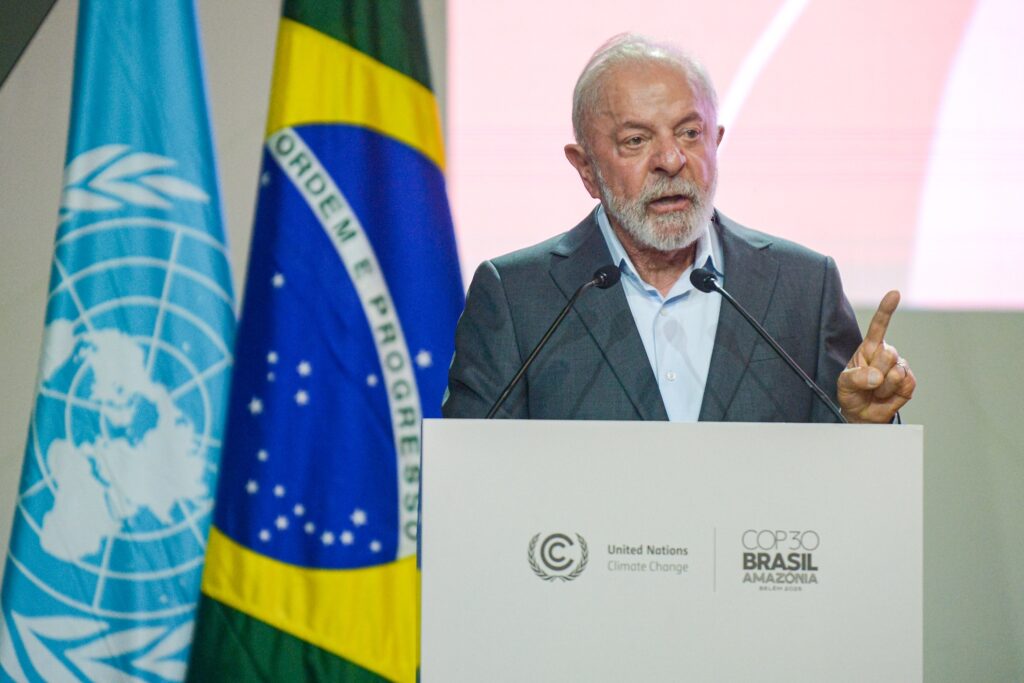With the US and EU wavering, Brazil signals that the Global South may now drive the transition
Thousands of people braved a scorching 30°C summer sun to enter the huge aerodrome-converted arena for COP30 at the northern port city of Belém, Brazil. By official accounts, 195 countries and more than 47,000 participants have signed up for the ‘implementation COP’, where the Presidency has promised to prioritise climate action over hollow pledges.
During the opening ceremony, COP30 President André Corrêa do Lago’s was not mincing words about the state of things. “The action plan will reveal many paths forward. This, therefore, is an implementation COP. I hope it will also be remembered as a COP of adaptation, a COP that will advance the integration of climate with the economy, with activities, with job creation,” he said, stressing that multilateralism is definitely the way forward to combat climate change.
The world may not continue looking towards developed countries anymore. “China added the elements that were missing [from the transition] — mainly technology. As a developing country, it is bringing solutions which are affordable — solar panels, EVs, wind energy, and batteries. The consequence of this is that by lowering the price of all these essential elements in the transition. Having both scale and technology, this contribution is significant,” said Lago during a press conference held in the afternoon.
“India is also going in the same direction. We will have two major markets who will lower the price of the transition,” he added.
With the US reneging on its climate pledges, and the EU watering down its Nationally Determined Contribution (NDC), will the climate action baton indeed move from the Global North to the Global South? This COP may set that tone.
Looking at the Global South for solutions
“In absence of the US, and the reluctance in the way other developed countries are forthcoming about funding climate action, this has opened up a way for the world to look at how developing countries are dealing with climate change,” said Lago.
“Developed countries already have balanced levels of social and economic development. They look at the transition differently than countries from the south. But the south is building everything now – education, industry – all these agendas of development, while dealing with [the impacts of] climate change.” He took Uruguay’s example, a country whose 99% of electricity needs are met by renewables.
Impetus for swift transition
In fact, renewables are trumping fossil fuels across the world. “Solar and wind are now the lowest-cost power in 90% of the world. Renewables overtook coal this year as the world’s top energy source. Investment in clean energy and infrastructure will hit another record high this year – with investments in renewables outstripping fossil fuels 2 to 1,” said UN Climate Change Executive Secretary Simon Stiell during the COP30 official opening.
Accordingly, he set out what needs to happen at this conference, which can set a positive transitory tone for the future. “So what needs to be decided here in Belem to match the opportunities with the scale of the crisis we face. We have already agreed that we will transition away from fossil fuels. Now’s the time to focus on how we do it fairly and orderly. Focusing on which deals to strike, to accelerate the tripling of renewables and doubling energy efficiency,” he said.
During a press conference the Least Developed Countries (LDC) Group called for bold action a decade on from the signing of the Paris Agreement. “The world must not allow the 1.5°C goal to slip away,” said Evans Njewa, LDC Chair who urged leaders to agree to the tripling of grant-based adaptation finance by 2030 as well as a roadmap for stronger 2030 and 2035 emission targets and fast-track funding to implement National Adaptation Plans (NAP).
The UNFCCC released an update on NDCs, reflecting new submissions in recent days from countries such as China and the EU. According to the analysis, global emissions would fall by 12% by 2035.

Even though that is progress, it isn’t enough, say experts. By current estimates, the world is heading for a temperature increase of 2.5°C, a degree hotter than the Paris Agreement goal. Bridging the NDC gap is likely to be a test at COP30.
But the presidency is moving quickly. It ensured that the COP30 agenda was adopted on Day 1 itself, avoiding any delays, even though there was a potential for an agenda fight over four different themes — unilateral trade measures, NDCs, Biennial Transparency Reports (BTR), and Article 9.1 — wherein developed countries are supposed to provide financial resources to assist developing countries with mitigation and adaptation.
Discussions on these contentious issues will be taken up during a stocktake on November 12, according to the Presidency. In any case, the Presidency seems determined to make things happen, resolve conflicts while keeping room open for discussions.
About The Author
You may also like
Companies in BASIC nations are turning carbon rules into an advantage: Report
Can green trade barriers save the environment?
Brazil Set 60-Day Deadline for Fossil Fuel Phase Out Plan
Litigation increases legalisation of protection against climate threats: Report
What COP30 reveals about the next phase of multilateralism

